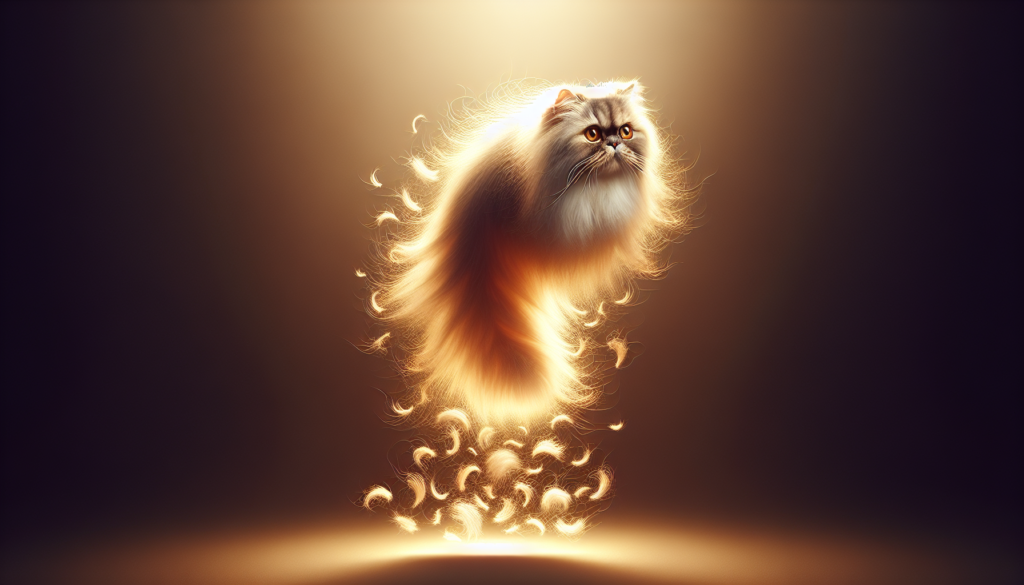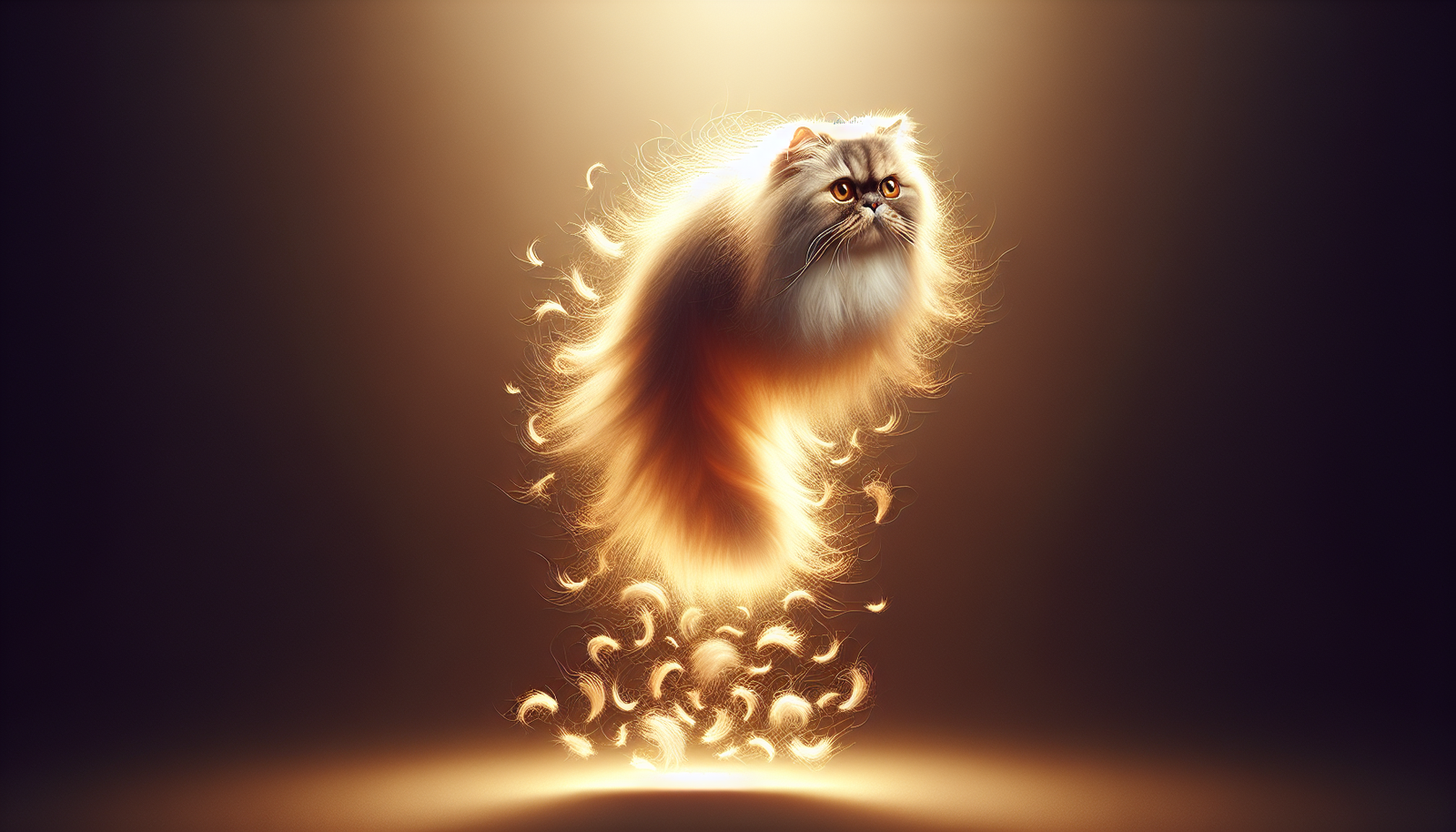If you’re a proud owner of a Persian cat, you might have noticed that its luxurious coat can leave a trail of fur wherever it goes. But have you ever wondered why these adorable felines shed so much? In this article, we’ll explore the reasons behind the shedding of Persian cats and provide you with some helpful tips on managing their beautiful but sometimes hairy coats. So sit back, relax, and let’s unravel the mystery behind your Persian cat’s shedding behavior.
Reasons for Shedding
Seasonal Shedding
Like many animals, Persian cats go through seasonal shedding. This is a natural process where the cat’s fur coat adjusts to changes in temperature and day length. During these times, you may notice an increase in shedding as your Persian cat loses its old, damaged fur to make way for a new coat. Don’t worry, this shedding is completely normal and usually lasts for a couple of weeks.
Health Issues
Sometimes shedding in Persian cats can be a sign of underlying health issues. If your cat is shedding excessively or experiencing bald spots, it may be a symptom of an underlying condition such as allergies, hormonal imbalances, or skin infections. It is important to monitor your cat’s shedding patterns and consult a veterinarian if you notice any abnormality.
Stress
Just like humans, Persian cats can experience stress, and shedding is one way their bodies respond to it. Changes in their environment, such as moving to a new home, introduction of a new pet, or any other major life events, can trigger stress-induced shedding. Providing a calm and comfortable environment for your Persian cat can help reduce their stress levels and consequently minimize shedding.
Pregnancy
Female Persian cats may experience shedding during pregnancy and after giving birth. This shedding is a natural part of the reproductive cycle and typically resolves on its own. However, if you notice any abnormal or excessive shedding during this period, it’s always a good idea to consult with a veterinarian to ensure the health and well-being of the mother and her kittens.
Contributing Factors
Coat Length and Density
One of the main factors that contribute to shedding in Persian cats is their luxurious coat length and density. Persian cats have long, thick fur that requires constant maintenance. The longer and denser the coat, the more likely it is for shedding to occur. The sheer amount of fur on a Persian cat can be overwhelming when it comes to shedding, but with proper grooming techniques, shedding can be minimized.
Genetics
Genetics play a significant role in the shedding patterns of Persian cats. Some Persian cats inherit a genetic predisposition to shed more than others. If both of the cat’s parents were heavy shedders, it is likely that their offspring will also exhibit a higher shedding tendency. Understanding your cat’s genetic background can help you better manage their shedding.
Environment
The environment in which a Persian cat lives can also affect its shedding patterns. Factors such as temperature, humidity, and overall air quality can influence how much a cat sheds. Extreme temperatures, dry indoor air, and exposure to allergens can all contribute to increased shedding. Creating a comfortable living environment with proper temperature control, humidity, and clean air can help reduce shedding.
Grooming Habits
Proper grooming is essential when it comes to managing shedding in Persian cats. Regular grooming sessions can help remove loose and dead fur, preventing it from ending up all over your furniture and clothes. Establishing a grooming routine that includes brushing, combing, and mat removal will not only minimize shedding but also keep your Persian cat’s coat healthy and tangle-free.

Managing Persian Cat Shedding
Regular Brushing
Regular brushing is a vital aspect of managing shedding in Persian cats. By brushing your cat’s fur daily, you can remove loose and dead hair before it has a chance to shed all over your home. Use a high-quality brush specifically designed for Persian cats, as their long fur requires special attention. Not only does brushing help reduce shedding, but it also promotes healthy skin and prevents matting.
Bathing
While Persian cats are known for their dislike of water, occasional bathing can help remove excess fur and minimize shedding. Use a gentle cat-specific shampoo and make sure to dry your cat thoroughly after the bath. Remember to introduce bathing gradually and provide positive reinforcement to make the experience as stress-free as possible for your feline friend.
Proper Nutrition
Feeding your Persian cat a balanced and nutritious diet can significantly impact their shedding patterns. Look for high-quality cat food that contains essential nutrients, such as Omega-3 fatty acids and biotin, which promote healthy skin and reduce shedding. Consult with your veterinarian to determine the best diet for your Persian cat’s specific needs.
Minimizing Stress
Stress is often a significant factor in excessive shedding. Minimize stress in your Persian cat’s life by providing a calm and predictable environment. Set up designated areas for eating, sleeping, and playing, and ensure they have a safe space to retreat to when they need some alone time. Regular playtime, interactive toys, and plenty of affection will help keep your cat happy and stress-free.
Addressing Health Concerns
Consulting a Veterinarian
If you notice any abnormal shedding patterns in your Persian cat, it is crucial to consult a veterinarian. A professional can assess your cat’s overall health and determine if there are any underlying medical conditions contributing to excessive shedding. They can also provide guidance and recommend appropriate treatment options.
Proper Diagnosis
In cases of excessive shedding, your veterinarian may recommend additional tests to determine the underlying cause. These tests may include blood work, skin scrapings, or allergy testing. By identifying the root cause of the excessive shedding, your veterinarian can develop an effective treatment plan tailored to your cat’s specific needs.
Treatment Options
Depending on the diagnosis, treatment options for excessive shedding in Persian cats may vary. Your veterinarian may prescribe medications to address underlying health conditions, recommend changes in diet or grooming habits, or provide specific treatments such as allergy shots or supplements. Follow your veterinarian’s advice and monitor your cat’s response to the prescribed treatments.

Preventing Allergies and Cleanliness
Air Purification
Investing in a high-quality air purifier can help reduce allergens in your home, ultimately minimizing shedding. Air purifiers filter out airborne allergens like pollen, dust mites, and pet dander, creating a cleaner and healthier environment for both you and your Persian cat. Place the air purifier in areas where your cat spends the most time to maximize its effectiveness.
Frequent Vacuuming
Regular vacuuming is essential to keep your home clean and minimize shedding. Use a vacuum cleaner equipped with a HEPA filter, which can effectively trap pet hair and dander. Vacuum carpets, upholstered furniture, and curtains regularly to prevent fur buildup and allergen dissemination. Consider vacuuming more frequently in areas where your cat spends the most time.
Reducing Dander
Dander, which is tiny particles of dead skin shed by cats, is a common allergen. To reduce dander and shedding, consider wiping your Persian cat’s fur with a damp cloth or pet-safe dander wipes. Regularly washing your cat’s bedding and other fabric surfaces they frequently come into contact with can also help minimize dander and shedding.
Allergy Medication
If you or someone in your household has allergies, over-the-counter or prescription allergy medication can help manage symptoms triggered by your Persian cat’s shedding. Consult with a healthcare professional or allergist to find the right medication and dosage for your specific needs. Remember, medication should only be used under the guidance of a medical professional.
Conclusion
While Persian cats are known for their stunning, long fur, shedding is an inevitable part of owning one. Understanding the reasons behind shedding and implementing proper management techniques can greatly reduce the impact of shedding in your home. Regular grooming, proper nutrition, and addressing any underlying health concerns are key to keeping your Persian cat’s shedding under control and ensuring a healthy, happy furball in your life.

